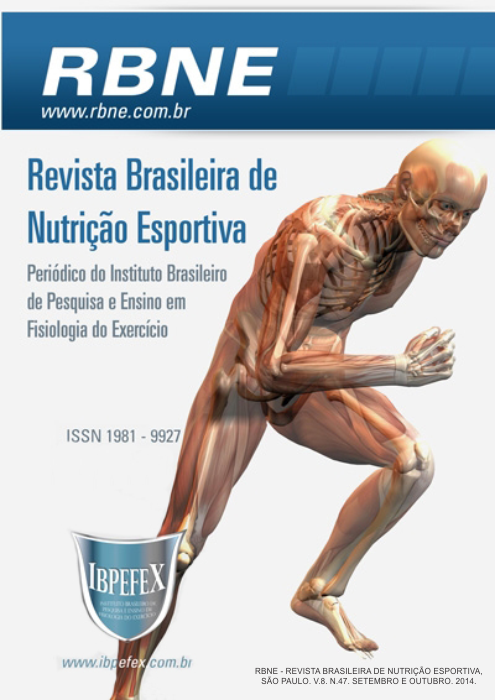Effects of beetroot juice on endurance exercise performance
Abstract
The main factors that limit performance during endurance exercise are: the reduction of carbohydrate stores, the fall in blood glucose, dehydration and lack of oxygen. The beetroot juice supplementation reducesthe O2 cost of submaximal exercise and enhances tolerance to high-intensity exercise. This study aimed to investigate the effects of beetroot juice on endurance exercise performance, through the exhaustion test on the bicycle ergometer. The study in which10 men, healthy and do not have similarity with the exercise test received 500 ml per day of organic beetroot juice (100g 400ml water) for seven consecutive days before completing a series of tests. On another occasion, they were given a placebo of blackcurrant for seven consecutive days before the same tests. It was reported after the test performed increased 98 seconds (P = 0.0375) compared to placebo ingestion, revealed no significant difference between the charges for the group of individuals who ingested beets when compared to the group of individuals who ingested placebo (P = 0.1964) and in relation to heart rate after the heating step, the groups beet and control, can be considered equal (P = 0.9091). Supplementation improved NO3 time of task failure.
References
-Bailey, S,J.; Winyard, P.; Vanhatalo, A.; Blackwell, J.R.; DiMenna, F.J.; Wilkerson, D.P.; Tarr.; Benjamin, N.; Jones, A.M. Dietarynitrate supplementation reduces the O2 cost of low-intensity exerciseand enhances tolerance to high-intensity exercise in humans.J Appl Physiol. Vol. 107. p. 1144-1155. 2009.
-Chow,W.H.; e colaboradores. Obesity, hypertension, and the risk of kidney cancer in men. N Engl J Med. Vol. 343. Núm. 18. p. 1305-311. 2000.
-Cole, C.R.; Blackstone, E.H.; Pashkow, F.J.; Snader, C.E.; Lauer, M.S. Heart rate recovery immediately after exercise as a predictor of mortality. N Engl J Med. Vol. 341. p. 1351-7. 1999.
-Ferreira, D. F. Sisvar: Sistema de Análise de Variância, versão 5.1. Lavras: DEX/UFLA, 2005. Software estatístico.
-Filgueira, F. A. R. Manual de olericultura: cultura e comercialização de hortaliças. 2ªedição. revisada e ampliada. Agronômica Ceres. 1982.
-Foss, M.L.; Keteyan, S.J. FOX’s Physiological Basis for Exercise and Sport.6th edition. Boston, MA: WCB:McGraw-Hill; 1998.
-Mcardle, W.D.; Katch, F.I. Nutrição, exercício e saúde. 4ªedição. MEDSI. 1994.
-Nishime, O.E.; Cole, C.R.; Blackatone. E. H.; Pashkow, F.J.; Lauer, M.S. Heart rate recovery and treadmill exercise score as predictors of mortality in patients referred for exercise ECG. JAMA. Vol. 284. p.1392-8. 2000.
-Ornelas, L. H. Técnica dietética: seleção e preparo de alimentos.7ª edição. Atheneu. 2001.
-Williams, M.H. Nutrition for fitness & sport. 4ª edição. London. Brown & Benchmark. 1995. p. 7-182.
Authors who publish in this journal agree to the following terms:
- Authors retain the copyright and grant the journal the right of first publication, with work simultaneously licensed under the Creative Commons Attribution License BY-NC which allows the sharing of the work with acknowledgment of the authorship of the work and initial publication in this journal.
- Authors are authorized to enter into additional contracts separately for non-exclusive distribution of the version of the work published in this journal (eg, publishing in institutional repository or book chapter), with acknowledgment of authorship and initial publication in this journal.
- Authors are allowed and encouraged to post and distribute their work online (eg, in institutional repositories or on their personal page) at any point before or during the editorial process, as this can bring about productive change as well as increase impact and impact. citation of published work (See The Effect of Free Access).






